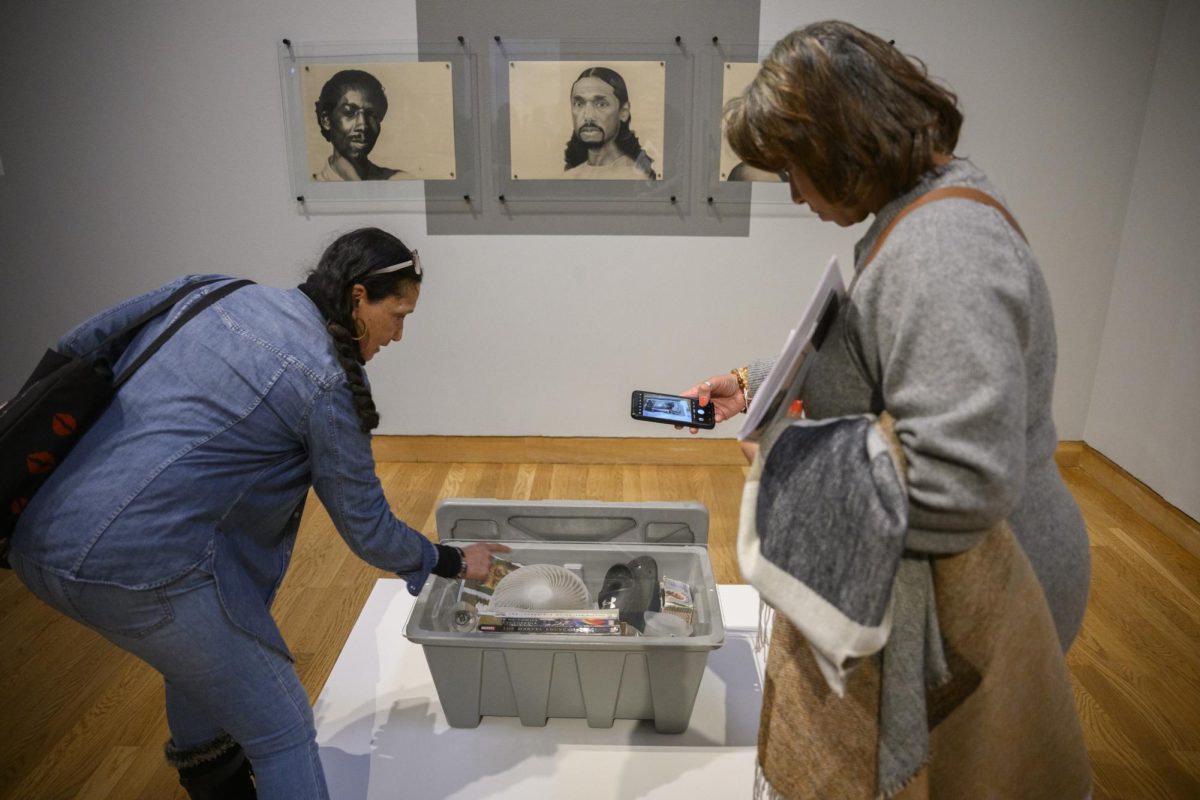Expressing the dichotomy between nature and technology through art is tired. One is scientific; the other is natural – inherently different yet inherently the same. We’ve seen and heard it all before, but not like this.
WHEN: Tuesday through Saturday, 11 a.m. to 7 p.m.; opening reception, 6 p.m. to 8:30 p.m., Friday, Feb. 29
WHERE: Katherine E. Nash Gallery, 405 21st Ave. South, Minneapolis
TICKETS: Free
The new exhibit at the Katherine E. Nash Gallery, “Culturing Nature : : Culturing Technology,” takes most of the notions of what we consider nature and what we consider technology and turn them on their heads.
Instead of thinking about using technology to control nature, said curator of the show and University art associate professor Diane Willow, ” ‘Culturing Nature : : Culturing Technology’ is meant to introduce a new paradigm of thinking of our relationship to technology.” Nature and technology are not in neutral zones, she said, they are culture constructs based on perspective and experience.
Willow came to the University from the Massachusetts Institute of Technology, where she worked with what she called tangible media – media that makes digital technology part of the physical world and more accessible to the viewer, instead of just staring at a computer screen. She came to introduce these types of new media to the University, examples of which can be seen in the show.
For some students, Willow said, the introduction of these new media into the curriculum was transformative for them.
“It wasn’t an area of contemporary art that they were familiar with,” she said.
“Culturing Nature : : Culturing Technology” is one attempt to bring this type of art to the University.
The seven female artists featured in the exhibit all explore the notion of cultural constructs of nature and technology through the use of both new media and traditional methods of artwork.
As an example, Willow described a piece by Kelly Dobson, titled “Blendie,” in which an actual blender that Dobson has adapted to interact with the viewer’s voice, blends the line between human and machine.
“She thinks of these machines as companion species,” Willow said, “with capacity to communicate.”
Willow also contributed a piece to the show titled “Cascade,” as part of her “Light Sensitive” series, that uses small plankton that emit light during their night cycle, hopefully getting the observer a reflection of light and living.
This type of work also requires more collaboration within fields that aren’t traditionally associated with art, including electrical and computer engineering, the design institute, plant biology and even the music program, with the help of professor Douglas Geers, one of the artistic directors and brains behind the Spark Festival of Electronic Music and Arts, which began last Tuesday and runs through Sunday. Again, instead of having hard-fast lines between art and science, the lines blur and one becomes the other.
Willow hopes that “Culturing Nature : : Culturing Technology” will encourage interest in the symposium she is trying to assemble, of female artists who have worked with technology and new media for decades. While she’s having trouble raising all of the funds for this symposium, she wanted to keep the idea fresh using this exhibit and the events of the “Wonderwomen : : Art and Technology” series on March 12-14, a smaller version of the full symposium.
Meanwhile, in the current exhibit, Gail Wight’s slime mold will continue to “Creep,” and Amy Youngs’s furry projection screens will capture webcam images of creatures in her piece “Why Look At Animals?” further exploring nature, technology and everything in between.







